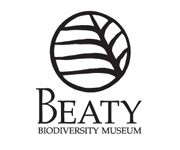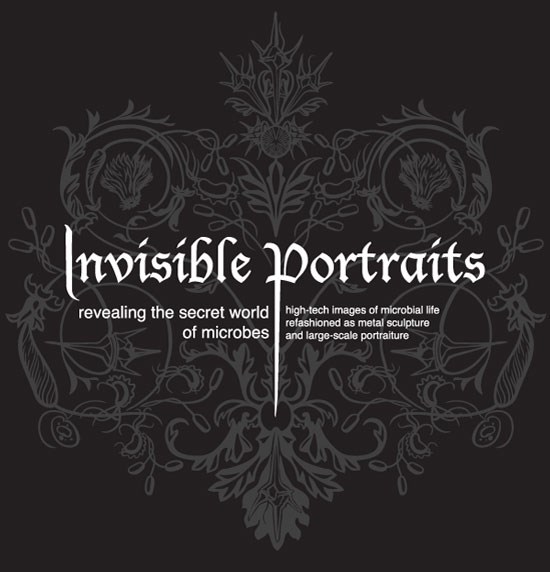 |
The Beaty Biodiversity Museum is Vancouver’s natural history museum, dedicated to creating a shared sense of community and wonder. The museum puts UBC's natural history collections, with more than two million specimens, on public view for the first time. Among our treasures are a 26-metre-long blue whale skeleton suspended in the Djavad Mowafaghian Atrium, the third-largest fish collection in the nation, and myriad fossils, shells, insects, fungi, mammals, birds, reptiles, amphibians, and plants from around British Columbia and the world.Come visit us - we’re located at 2212 Main Mall, Vancouver, BC. You can find more info at beatymuseum.ubc.ca |
Invisible Portraits, the Beaty Biodiversity Museum's current exhibition, is full of tiny organisms that usually go unseen. The black-and-white scanning electron micrographs are presented in ornate gilded frames, referencing the presentation style of academic portraiture, but with very unusual subjects imaged in a very high-tech method.
Derek Tan, the museum's Digital Media Specialist, and the exhibition's designer, created a Rococo-inspired arabesque used in the show's design elements. Traditionally incorporating botanical forms, an arabesque is a curving decorative motif often applied to architectural details such as ornamental moulding, or calligraphic embellishment in art and design. The arabesque created for this exhibition features microbes and other unicellular organisms hidden within it.
Contained within the design are the termite gut symbionts Trichomitopsis and Trichonympha; two types of dinoflagellates, the often spiky-walled protists; the biflagellated unicellular green algae, Chlamydomonas; diatoms, the silicon-walled algae; the spiral-coated protist Euglena; and choanoflagellates, eukaryotes that are the closest living relative to animals.
If you haven't yet seen the work of Kevin Carpenter, Erick James, and Patrick Keeling in Invisible Portraits, come by the Museum. If you have seen it, did you spot the hidden protists? Perhaps there's something else you missed, we'd love to see you again. Invisible Portraits runs until January 5th, 2014.
This holiday season, why not bring your family to the Beaty Biodiversity Museum to discover Invisible Portraits, explore our themed Extremes programming, and ignite your sense of wonder over biodiversity?



